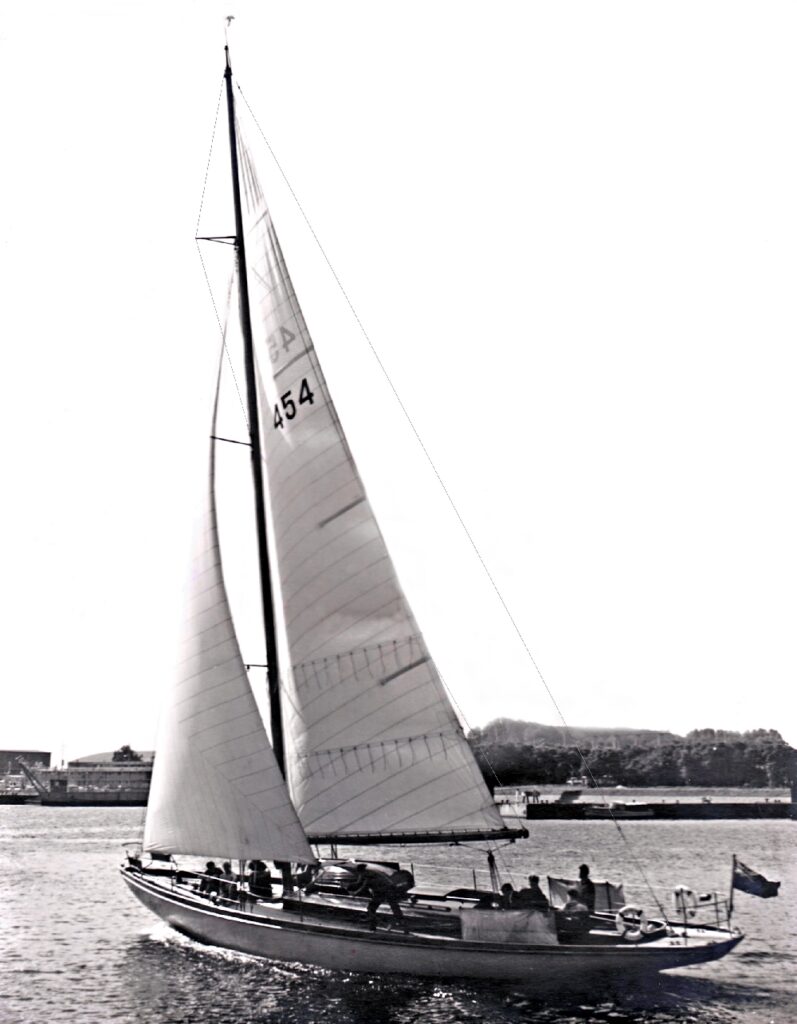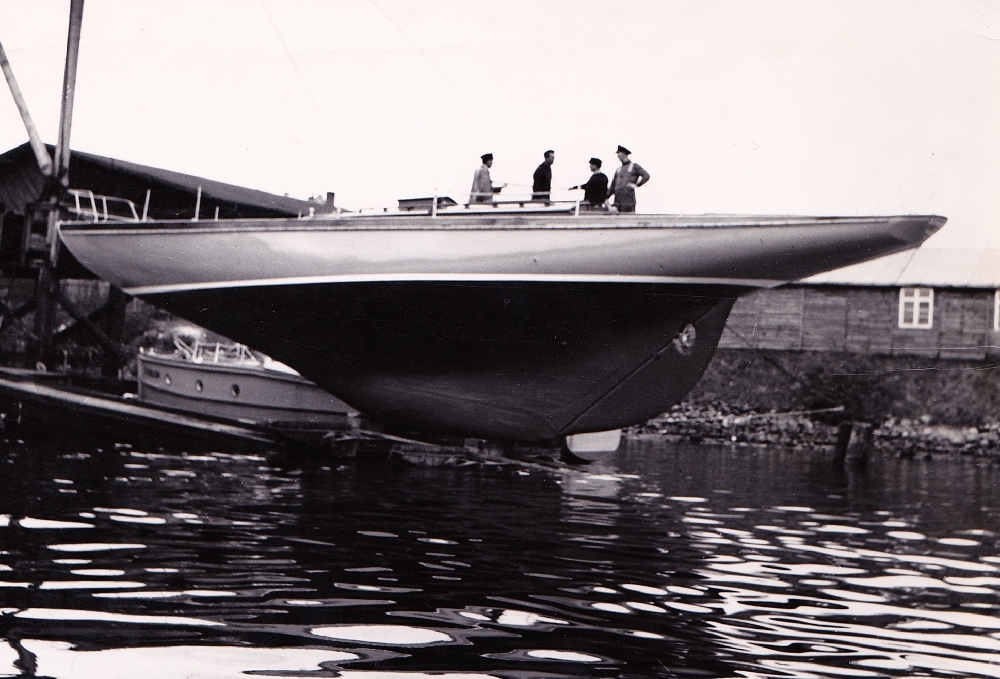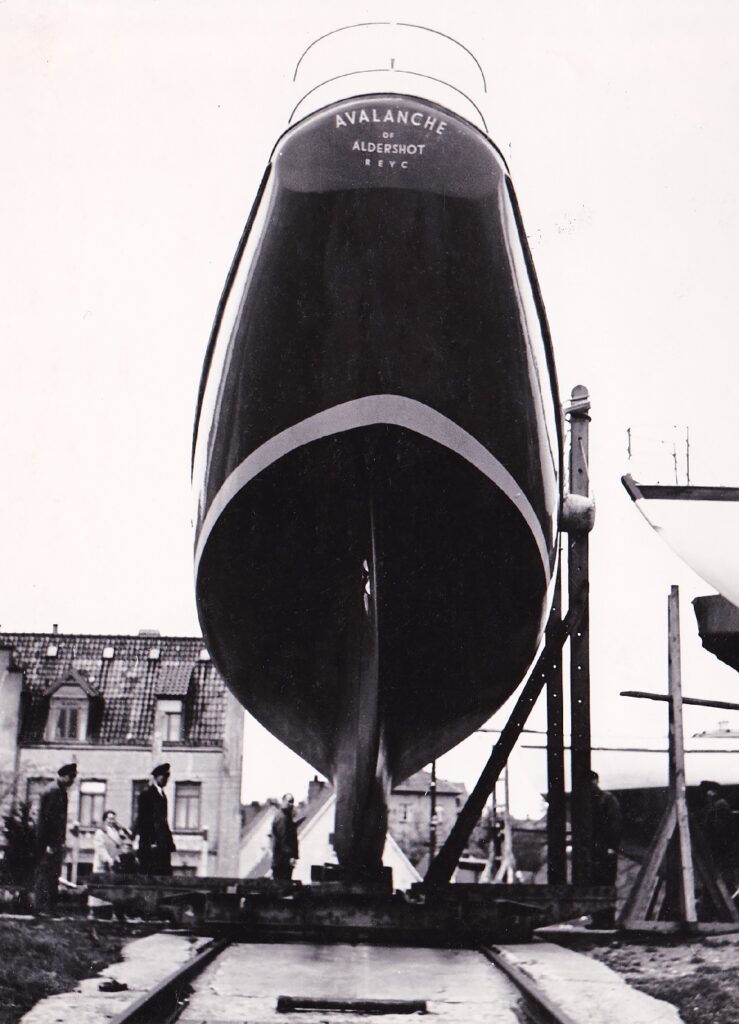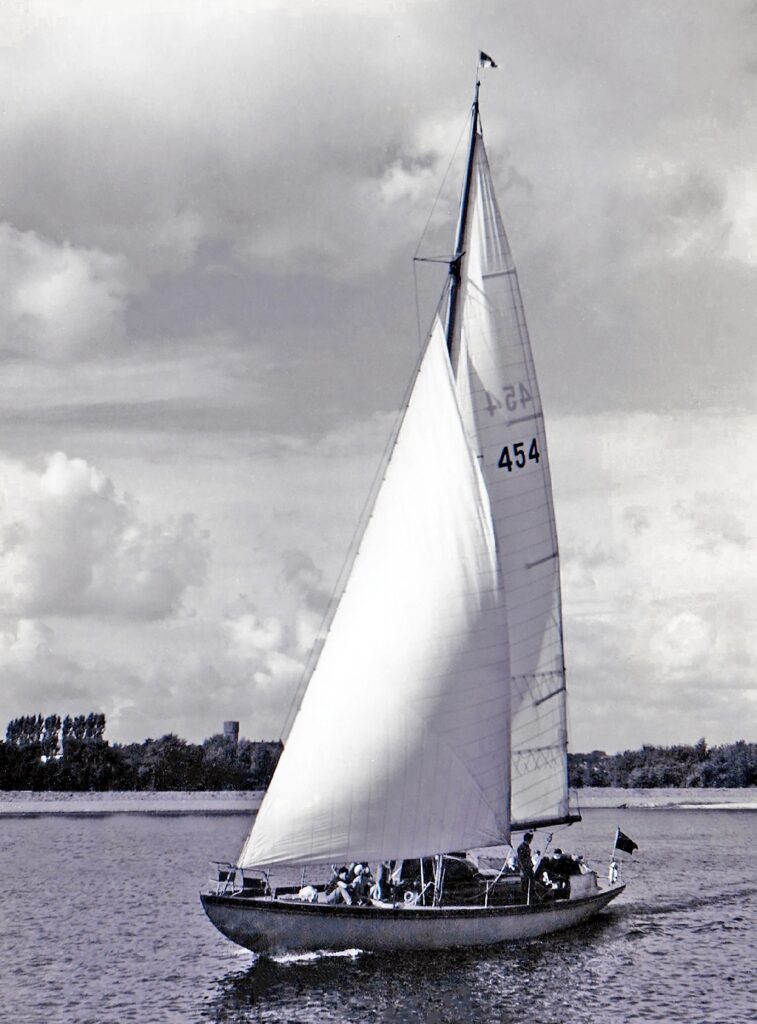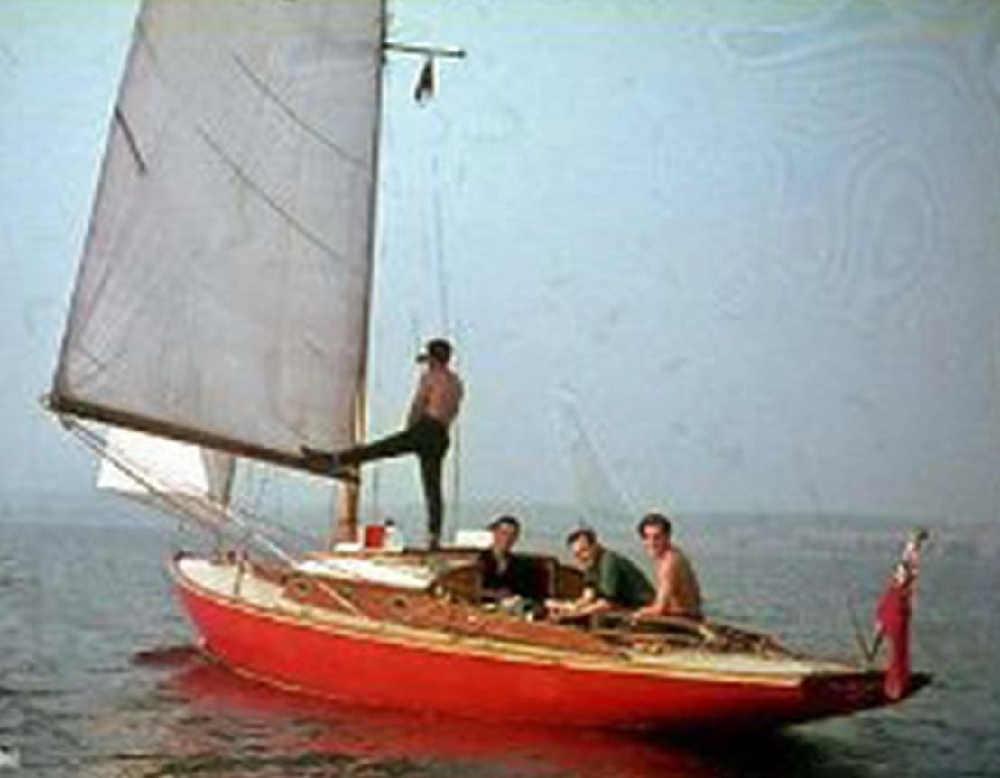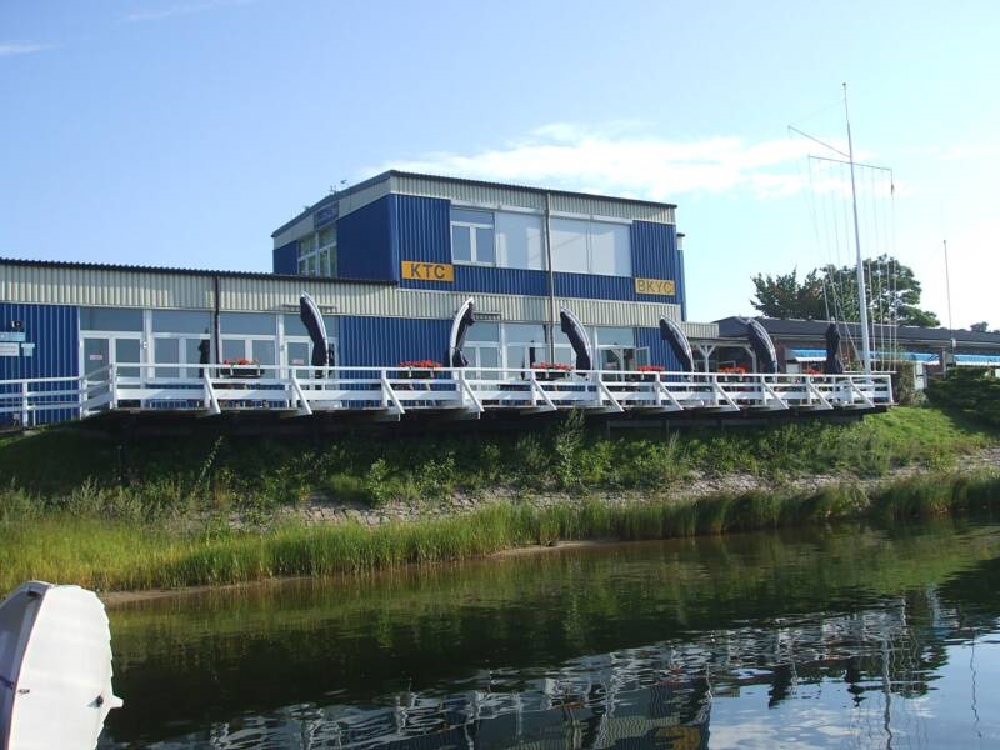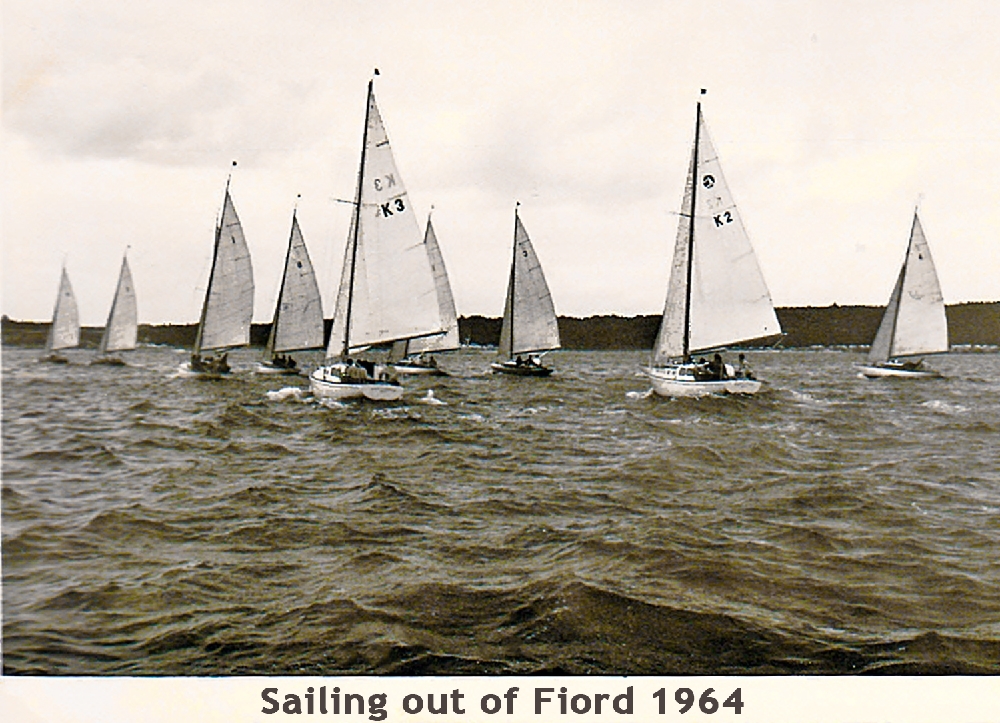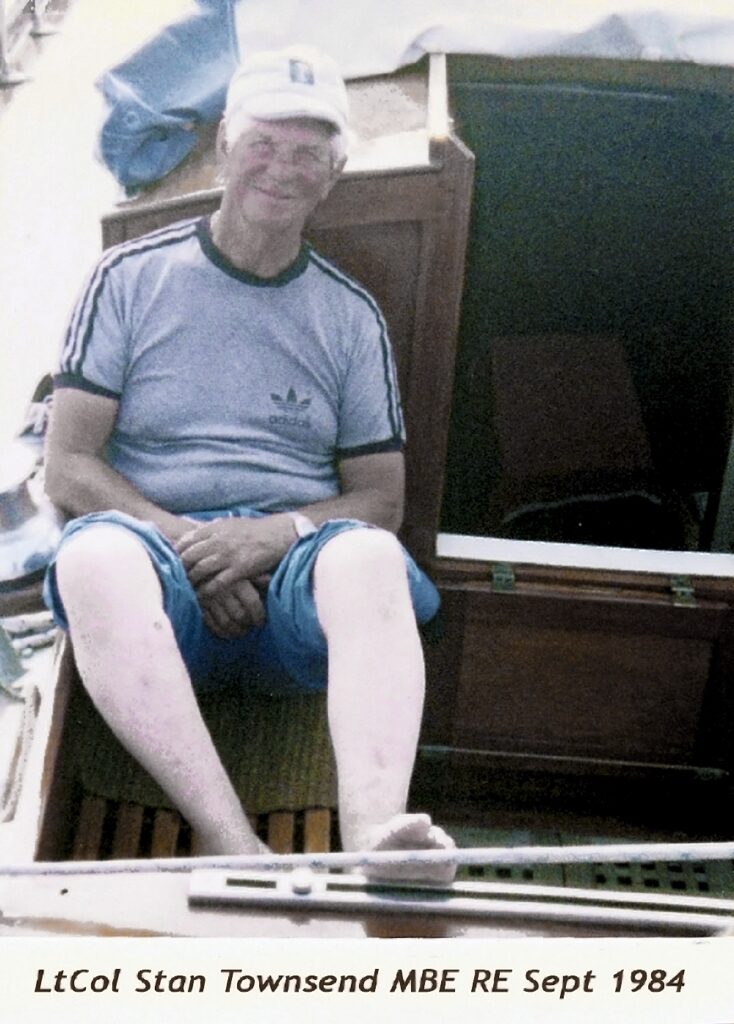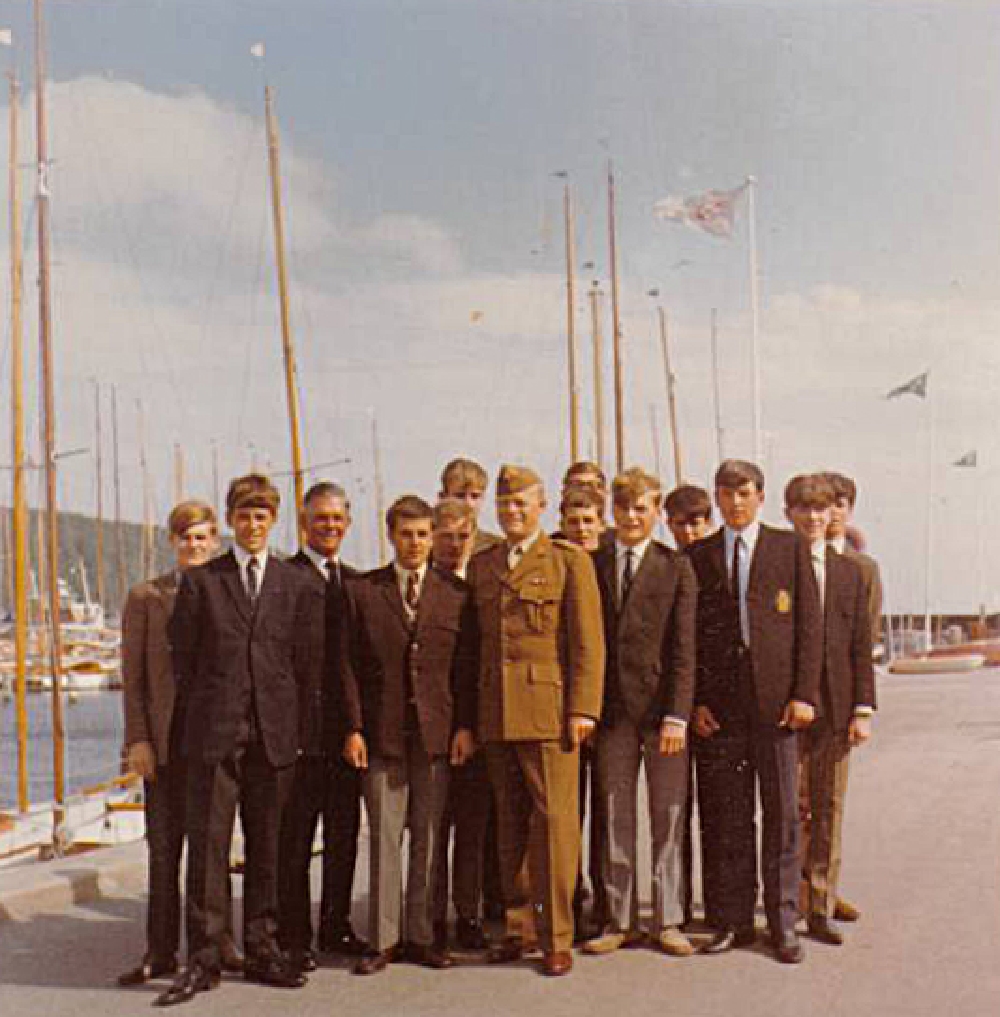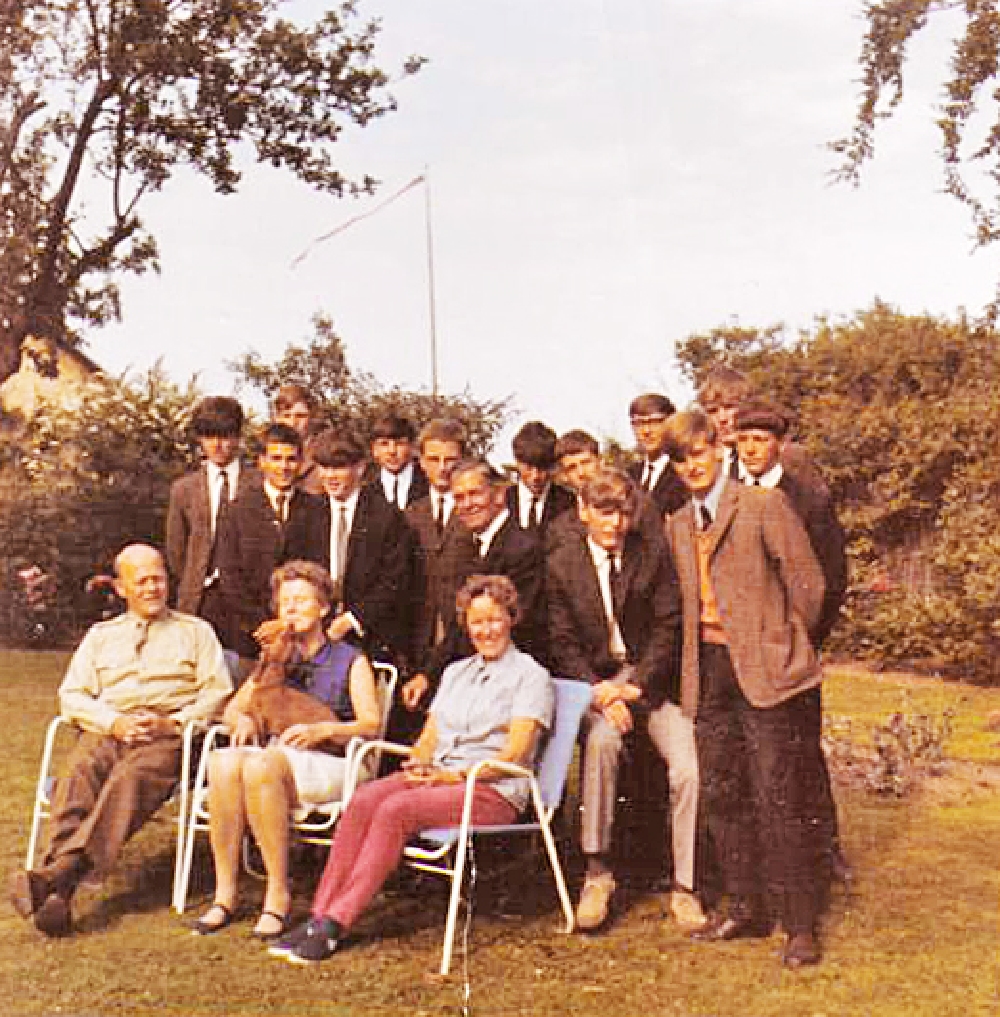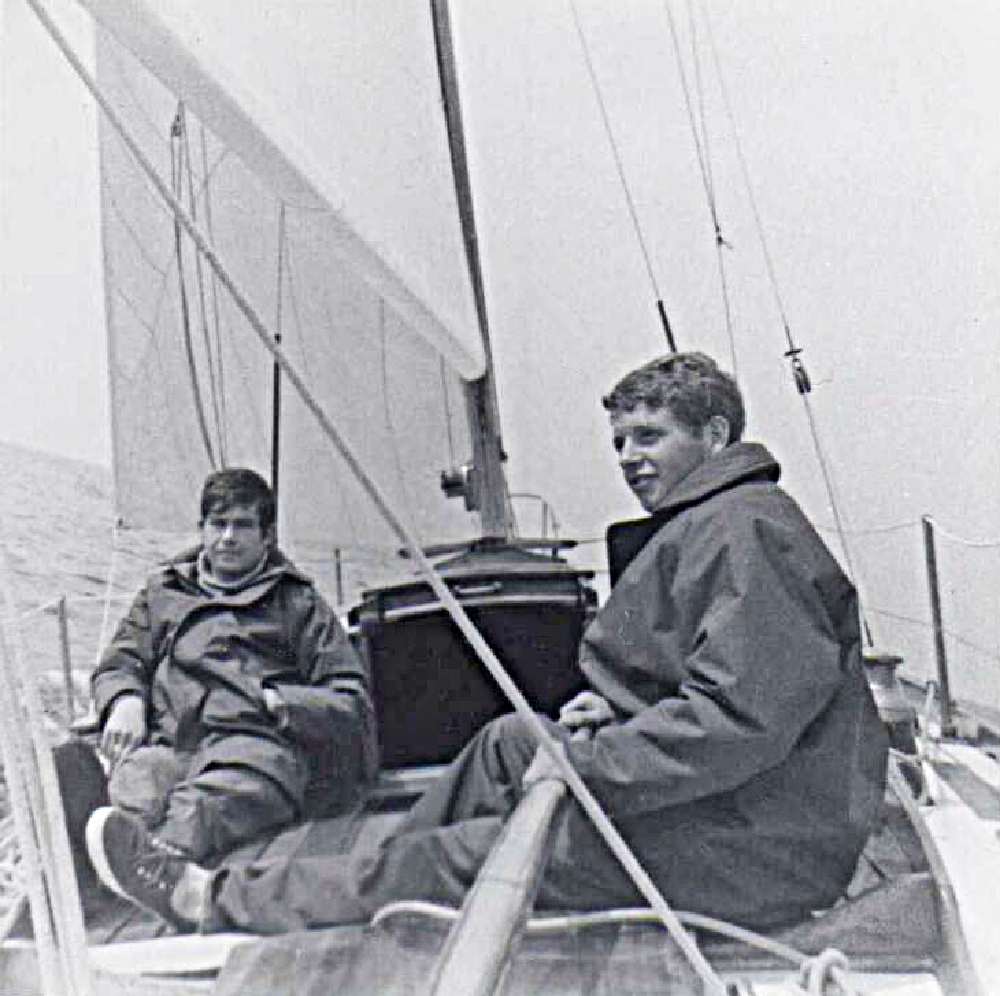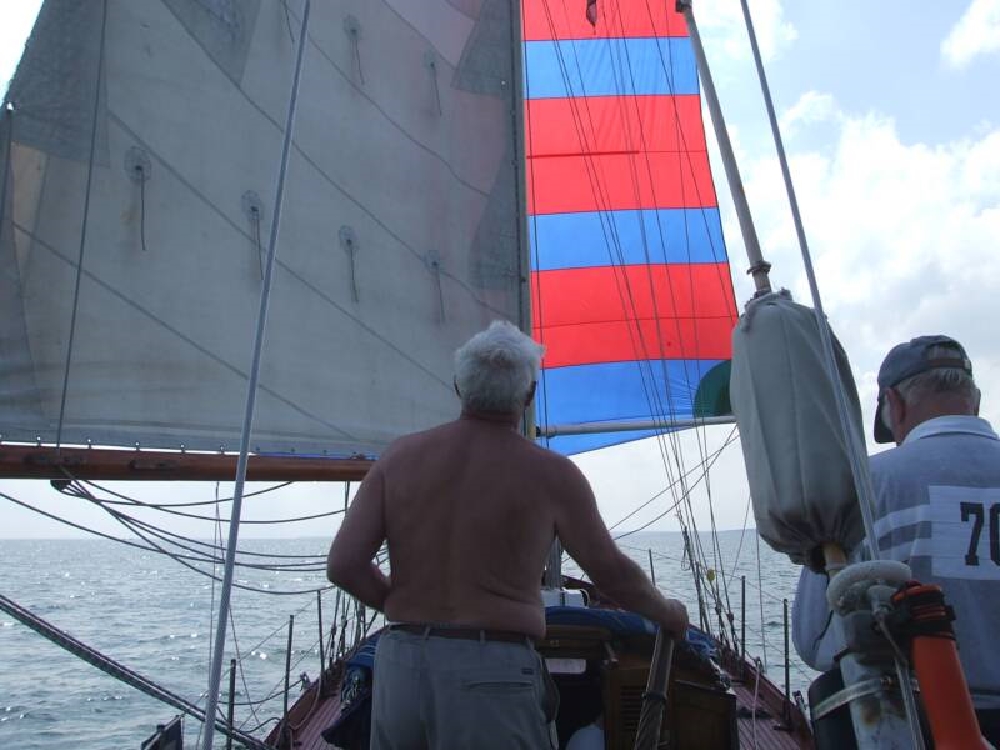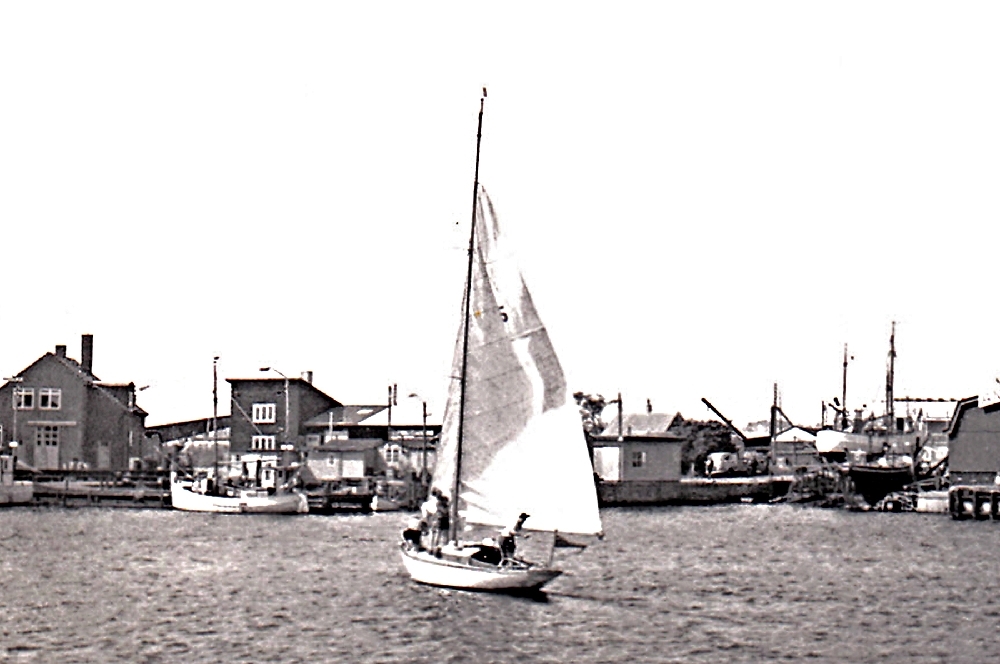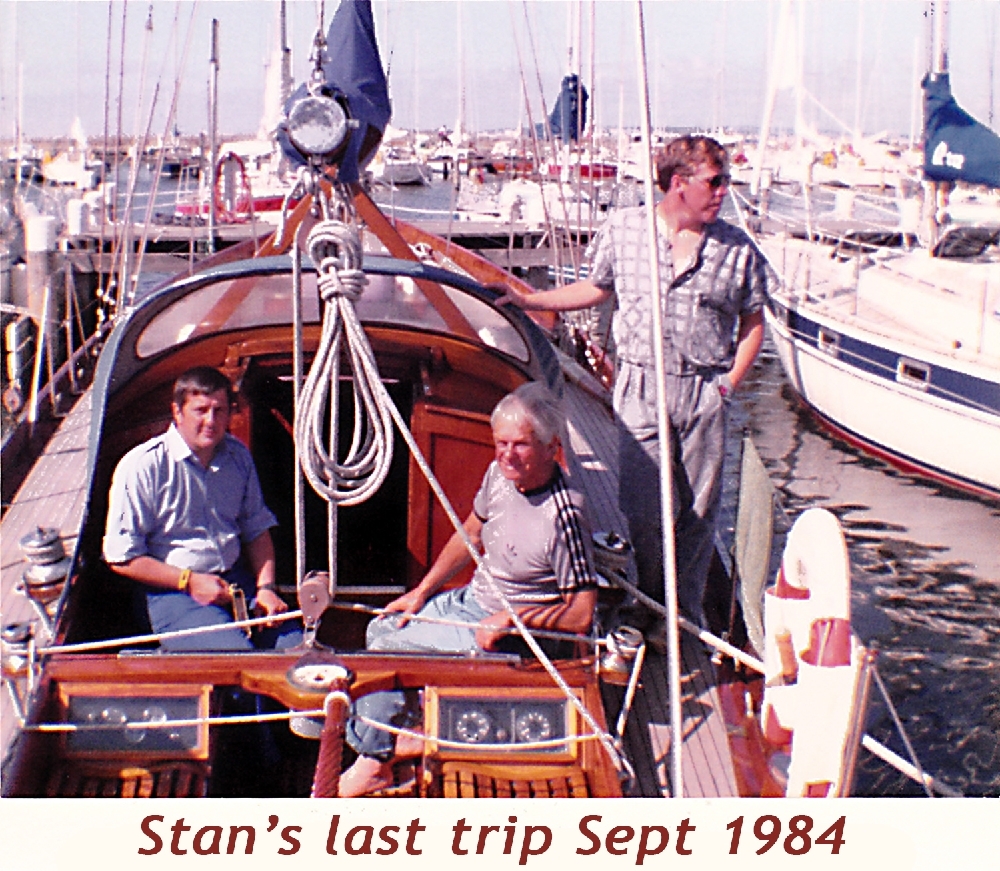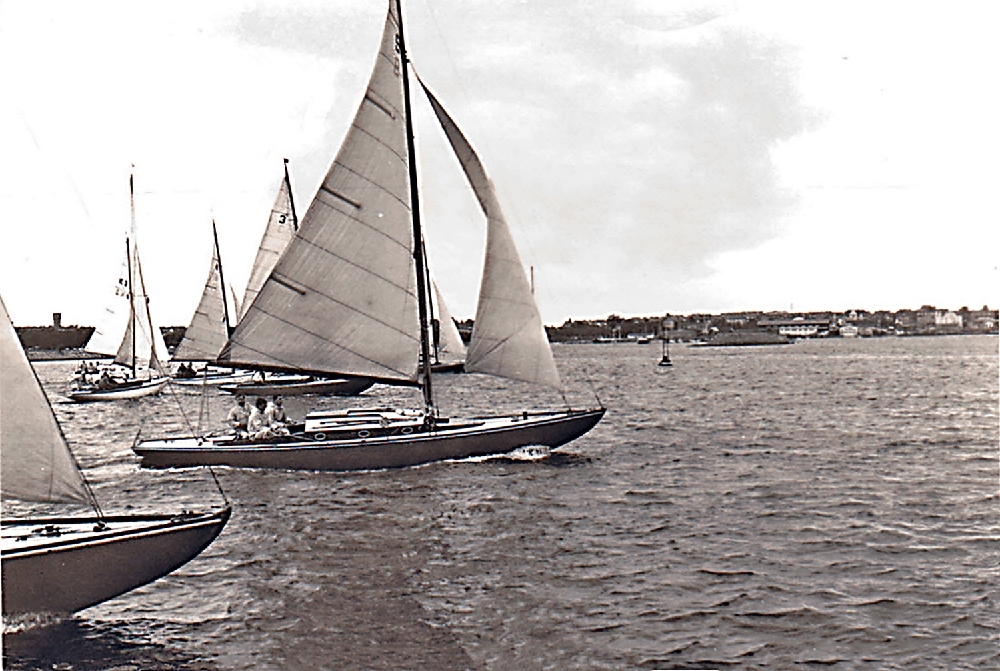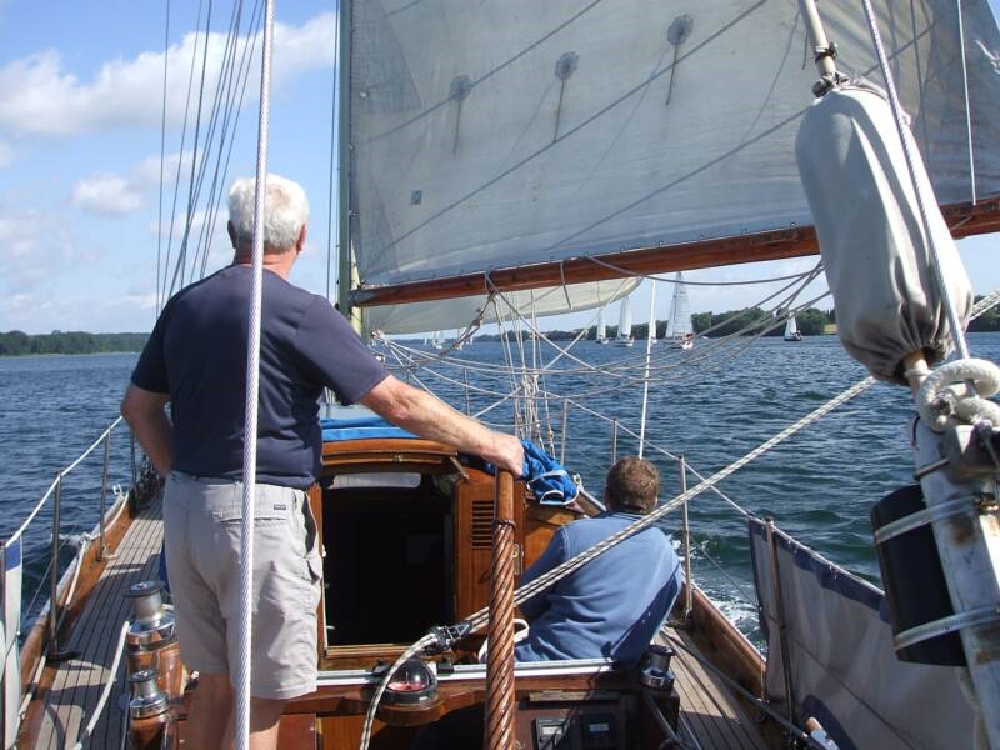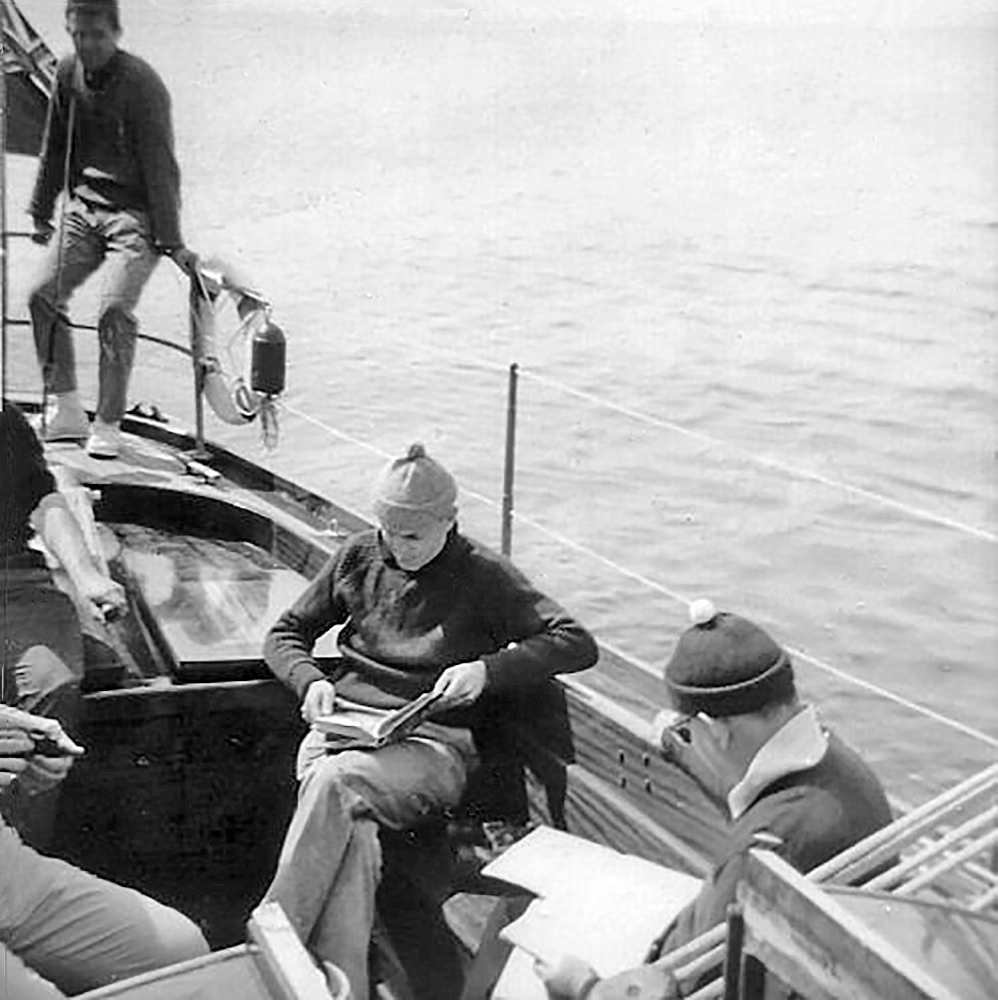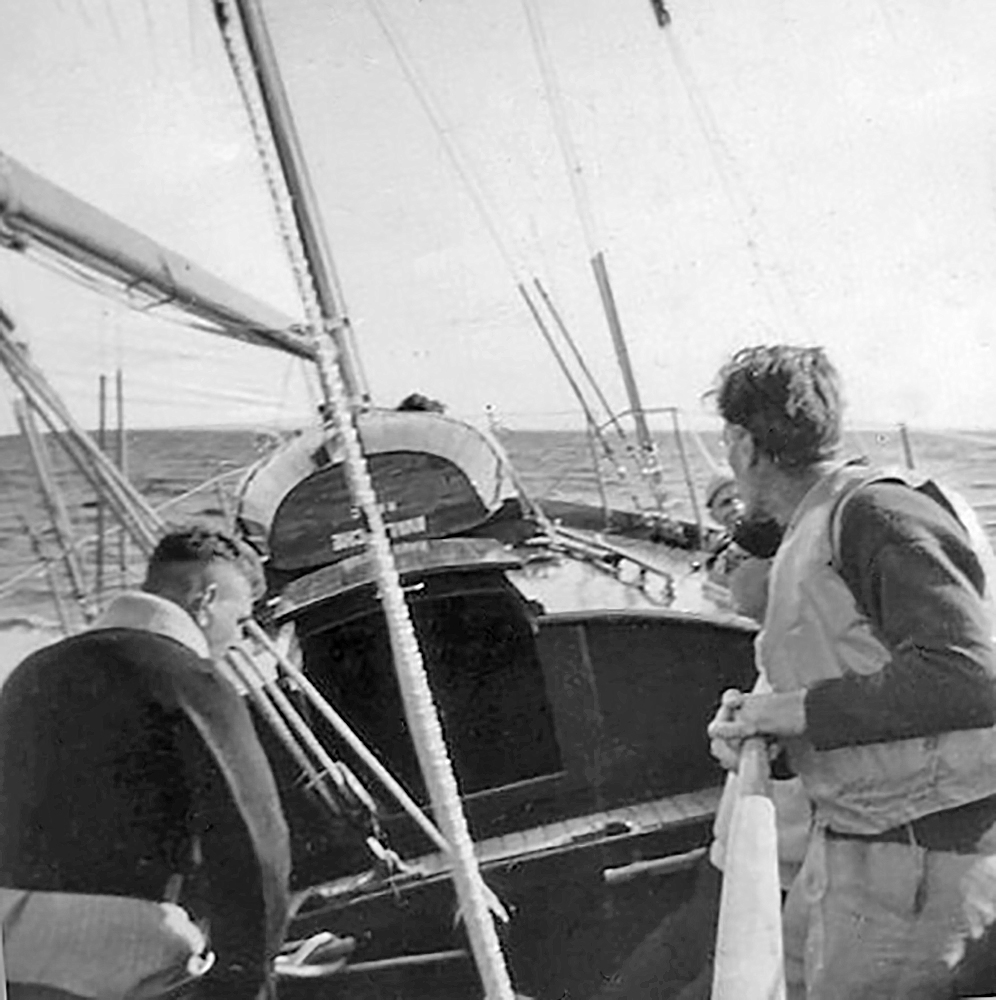The British Kiel Yacht Club came into existence on 11 June, 1945 and was started by Colonel W G Fryer, the Deputy Chief Engineer of 8 Corps.
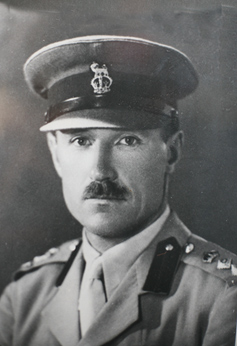
Col W G Fryer
Recalling how he started the club, Colonel Fryer said: ” I found the Olympia Haven full of yachts and the Kieler Yacht Club locked up and empty. So I told the Chief Engineer and the Assistant Quarter Master General (AQMG) of 8 Corps that I was going to requisition some yachts from the harbour and form a yacht club. They both nodded, so I went ahead.”
These yachts, known as windfall yachts, were built in Germany in the 1930s to provide training for the German armed services. Owned by the German government, they were taken by the British government as reparations and were initially allocated to Navy, Army and Air Force of the British and Commonwealth Services. The windfall yachts to remain at Kiel included the likes of Avalanche, Overlord, Seascape and Flamingo, which, in 2015, was the last windfall yacht to be sold.
From the beginning, the “Royal Engineer Yacht Club (Germany)” made its base at Kiel and shared all the facilities of the BKYC, later, in 1946, the British Air Forces of Occupation did the same. Until the end of the 1950 season the BKYC was an officer’s club – due to the traditions which had prevailed in the Services before the War. The “Victory Sailing Club” was established in Kiel in July 1945 to provide sailing for all ranks although, as there was a separate officers-only club in the BKYC, other ranks had some degree of preferential treatment. After BKYC had to operate as a conventional yacht club, it came under financial pressure. Having no formal governmental support, the club moved to Stickenhorn in 1951 and returned the club house to the former owner, the “Kieler Yacht Club”. The move to Stickenhorn caused a significant change to the membership structure. The BKYC became an all ranks club. Nevertheless there had been officer’s and other rank’s ends in the clubhouse until 1956, when Stan Townsend became sailing secretary and abolished that structure. After Stan Townsend retired he retained his affection and attachment to the club until shortly before he died in 1985. He bequeathed his own boat ‘Ragna R’ to the Royal Engineers Yacht Club.
The club was well supported by all ranks. It provided watermanship training for BAOR soldiers, cruising facilities for sailing families and passage races for the racing fraternity.
Gradually the ‘windfall’ yachts were fazed out and replaced by modern yachts the last of which were transferred to the UK.
The club was a British Yacht Club. It was the owner of numerous boats and was using the facilities of Kiel Training Centre, where members of the Royal Navy, and probably also of German Bundesmarine (the KTC logo shows a lion with half a British and half a German flag), are trained in sailing.
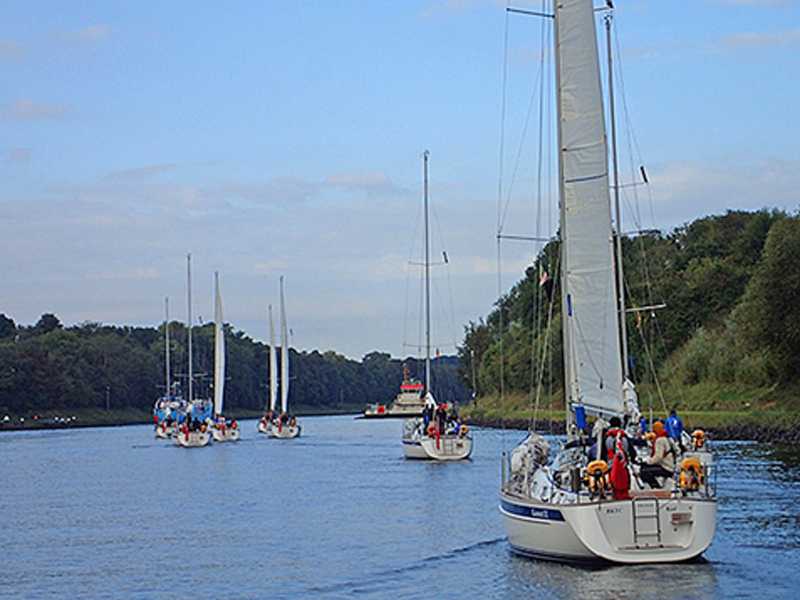
In 2016 the Ministry of Defence’s Sailing Training Centre at Kiel was closed, and so was the BKYC associated with it. The staff and boats left for Gosport, UK, on 5 October 2016 and are now located at the Joint Services Adventurous Sail Training Centre (JSASTC).
The Commandant of the Kiel Training Centre and Flag Officer for the British Kiel Yacht Club, Major Adrian Pery said it was an emotional time.
“I am deeply saddened to see the end of an era,” said Pery. “The Kiel Training Centre and the British Kiel Yacht Club provided fantastic sail training for so many, in a fantastic place to sail – the South Baltic.”
Lt Col S G Townsend MBE RE
The name of Stan Townsend stands beside that of Bruno Splieth as a cornerstone of the BKYC. He was born on 25th April 1913 and entered the Army through boy service when he was 15. During his three years of junior service he qualified as a draughtsman and after six years of adult service at Chatham and in Singapore he was promoted Sergeant. The war years were spent at Chatham and also in Madrid where he was on the staff of the Military Attache and where he became not only fluent in Spanish but a lover of that country. From 1949 to 1952 he returned to the Far East, this time as the Chief Draughtsman in the GHQ Drawing Office. He was appointed a Member of the Order of the British Empire during this tour. He then returned to Chatham and on 21st September 1955 he was commissioned. His first appointment as an officer was as Garrison Engineer (GE) on the staff of Commander Royal Engineers (CRE) Hamburg and it was there that his long association with the BKYC began.
Stan Townsend had first developed as a dinghy sailor during his first tour in Singapore. During his second tour there he had earned high praise as the driving force behind the all ranks sailing club (as well as the FARELF Camera Club). So he was already a keen sailor when he arrived at Hamburg and he immediately joined the BKYC. In 1956 he was transferred to 404 DCRE at Kiel under the command of Maj (later Maj Gen) GW Moods, primarily as a GE, but also to act as the Captain of Boats and Sailing Secretary of the BKYC. (He was also a noted rugby referee and in 1957 he officiated at a match between East Berlin and Kiel).
His GE duties took him all over Schleswig-Holstein and up into Denmark. He is remembered by at least one member of the staff of the former King Alfred’s School at Plön (about 20 miles to the South East of Kiel) arriving there on his motorbike to go about his business. His talent for languages developed as he quickly mastered firsty German and then, as he spent more time in Denmark, Danish as well.
As a bachelor, Stan Townsend was able to devote most of his spare time to the Club for which he worked for so long. He spent some time using his skills as a draughtsman and as a sailor to produce a handbook of chartlets of most of the harbours used by the BKYC fleet. Later he developed this into a book, ‘The Baltic Pilot’, which was for many years the definitive work in English on the Baltic waters. During his close association with Kiel he rose in rank and finished in the post of Chief Instructor of the Advanced Watermanship Training Centre as a Lieutenant Colonel. He was finally posted away from Kiel on 27th March 1968 (after 12 years) and a month later he retired from the Army. However this was not to be the end of his association with Kiel or the Army. In 1967, before his retirement, he had acquired the 54ft yacht ‘Ragna R’. She had been built in Sweden in 1938 and he bought her, in the UK, with the express intention of running training cruises for young men. He based her at Thuro in Denmark and she became a regular visitor to the BKYC at Stickenhorn as she changed her crews of young soldiers and apprentice tradesmen.
After leaving Kiel, Stan had made his home at Chepstow where he worked as a part1ime instructor in the drawing office of the Army Apprentice College. There he joined many of the College activities, especially the annual Gilbert and Sullivan productions. He also ran the Photography Club. He loyally supported the Beachley Old Boys Association and was eventually rewarded by being appointed as a Vice-President, an honour normally only accorded to former Commandants,
In 1981 Stan Townsend suffered his first heart attack and so, for that and subsequent seasons, the Royal Engineers attached a young soldier to work with him, both to help with the annual fitting out of ‘Ragna R’ and as a back-up in case he became ill at sea. In 1984 he was taken ill again and, realising that his carefree cruising days were nearly over, he began discussions with the REYC with a view to making ‘Ragna R’ available to the Club on a permanent basis. He died on 27 th January 1985, but his memory is kept alive in both the Royal Engineer and the British Kiel Yacht Clubs through ‘Ragna R’ which as a final gesture of generosity and a wish to give young men the opportunity to enjoy the sea as he had done, he bequeathed to the REYC.

The ensign was the red ensign

The burgee was designed by Col Fryer, who had started the club, but the same month it came into existence he was transferred.
All images supplied by the British Kiel Yacht Club or Boba

